Dotted around the entire coastline of the Maltese archipelago, the 17th century watchtowers were Malta’s first line of defence and still stand a silent guard today.
Watchtowers have dominated the island’s coastline for centuries, and have now become an iconic feature of the Maltese landscape. Built mostly during the 17th century by the Knights of St John, they were manned nightly to look out for any seaward approaches and to raise the alarm of any imminent attack.
Malta's watchtowers were built within sighting distance of each other, so that a fire signal lit in one post could be spotted by the neighbouring tower, and the message could be carried on around the island in this manner. Smoke and flags were used as alarm signals by day, while fire and petards were used by night. Each tower was manned by a Master bombardier and a number of tower guards, the amount varying between the different towers.
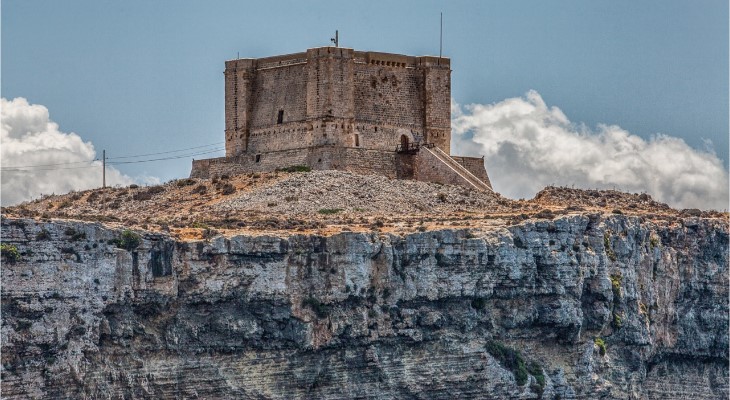
©viewingmalta.com - (Gregory Iron) St Mary's Tower on the island of Comino
Grand Master Alof de Wignacourt (1601 - 1622) was the first to introduce this coastal guarding system in Malta, but he was only following on from Sicily, which already had an established watch-post system of its own by then. The Knights had already built such towers in Rhodes and the Dodecanese islands before coming to Malta, yet it wasn’t until the early 1600s that they had the resources to start a coastal look-out network on the island. In total, five Grand Masters built over 30 towers between them, from 1601 to 1720.
When the Turks attacked Malta again in 1614, after their scorching defeat in the Great Siege of 1565, the Order realised it was time Malta invested in a proper systematic fortified defence network along the unprotected and largely unpopulated coastline.
Wignacourt had already started the construction of a chain of six towers, with the first erected at St Paul’s Bay in 1609, which still stands today and is open to the public. The south of Malta got two towers, one in Marsaxlokk (St Lucian Tower, now the seat of the Malta Centre for Fisheries Sciences) in 1610, and a substantial fortification in St Thomas Bay, Marsascala, in 1614, right where the Turks had landed a second time. The Northern shores of the archipelago were protected with a tower built in Marsalforn on Gozo in 1616, and two on the island of Comino. The Santa Marija Tower on Comino is still open today, between April and October from Wednesday to Sunday, from 10am to 3pm or when the flag is flying.
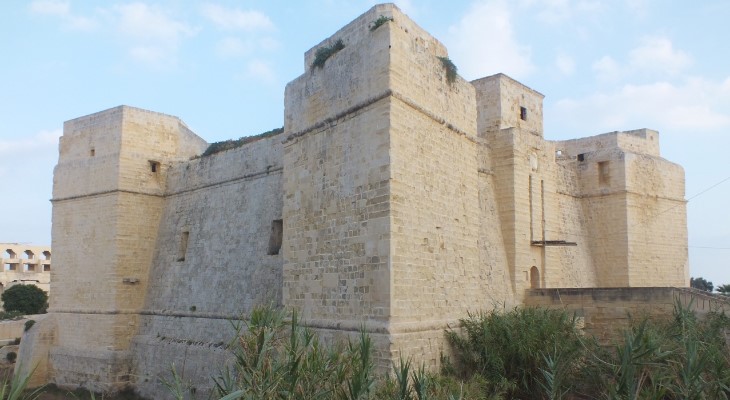
©viewingmalta.com - (Pauline Dingli) St Thomas Tower in Marsascala
These early towers were large squarish structures, resembling small forts rather than simple vedettes. From the mid-17th century onwards, the structures were more streamlined and smaller in shape, and were designed purely as look-out posts. Ta’ Xutu (Sciutu) Tower in Wied iz-Zurrieq was one of these “new” concept towers built by Grand Master Jean Paul Lascaris in 1637, and would serve as a prototype for a further 13 towers built by Lascaris’ successor Grand Master Martin de Redin.
Recently restored by the national trust of Malta, Din l-Art Helwa, and open to the public from Tuesday to Sunday (9:30am to 12pm), Ta’ Xutu Tower was the first to have vaulted ceilings instead of wooden beams. The stronger construction meant it could take the weight of a heavy mounted cannon on its roof.
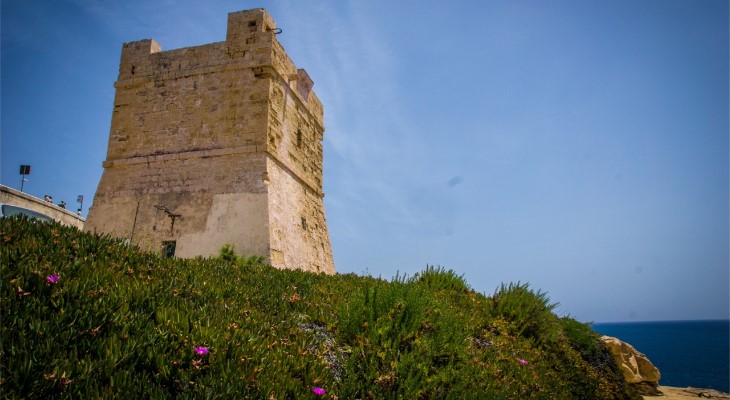
©viewingmalta.com - Ta' Xutu Tower at Wied iz-Zurrieq
But this tower is not just a relic of the past. It was in use throughout the British colonial period when the forces even built a lean-to kitchen. The tower continued to be used through World War II as a coastal observation post, and later it served as a police station until 2002.
Climbing up the steep steps to the rooftop, you are rewarded with a magnificent view along the south western coastline of the island.The two neighbouring towers, one on either side of Ta’ Xutu, are clearly visible, as well as the prehistoric temple of Mnajdra. Straight ahead is the uninhabited islet of Filfla, now a protected nature reserve, which was used for bombing practice.
Most of de Redin’s 13 towers still exist and are in good condition today, and a few are even accessible to the public. Meanwhile, St Julian’s Tower on Tower Road (yes, that’s why it’s called that) in Sliema is a now popular casual restaurant.
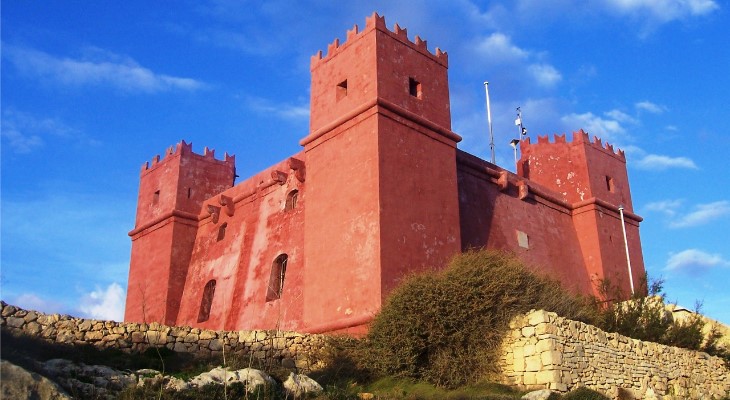
©viewingmalta.com - (Pauline Dingli) St Agatha's Tower in Mellieha
You can also visit St Agatha’s Tower in Mellieha, also known as the Red Tower (open daily). As the Knight’s primary stronghold in the north of Malta overlooking the important bay of Mellieha, it used to be manned by a garrison of 30 men, armed with enough supplies to see them through a siege of 40 days.
Another one worth visiting is Dwejra Tower, guarding the western flank of Gozo. Built in 1652, it was still in use during WWII, when the men on watch duty helped rescue a Royal Air Force pilot whose Spitfire had crashed in Dwejra Bay in 1942. The tower is now open to the public all year.
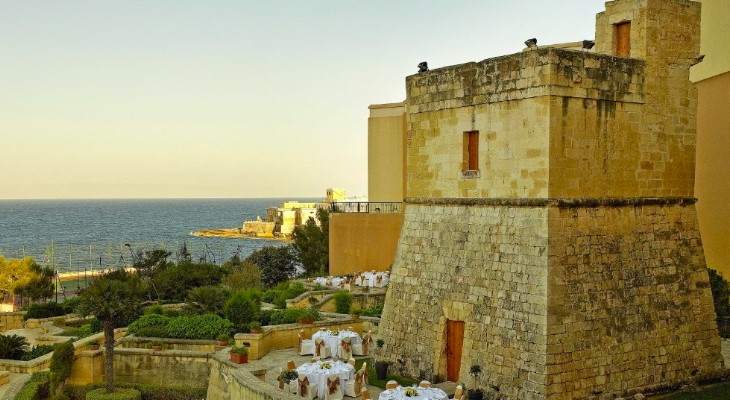
©Corinthia Hotel St George's Bay
And if you happen to be staying at the Corinthia Hotel St George’s Bay, you’ll spot one of these 17th century gems right in the hotel’s grounds. This particular tower was used by the British as a guard post until Fort Pembroke and Pembroke Battery were built. It was later converted into a fire control station.